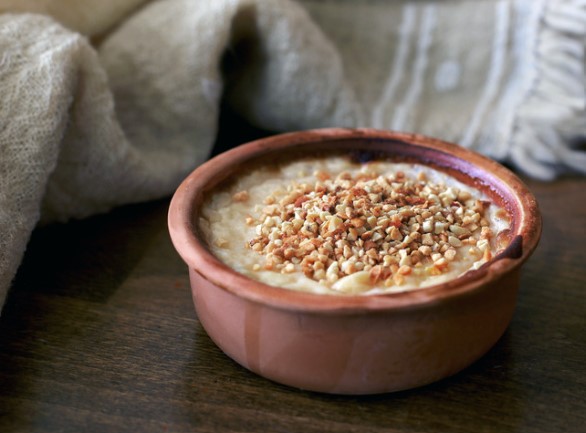Taste History
Ancient Britons, during the Iron Age and Roman times, had a diet based on locally available food sources. They relied on farming and foraging, consuming crops like wheat, barley, and oats, as well as fruits and vegetables. Meat from livestock such as cattle, sheep, and pigs was also part of their diet, complemented by wild game and fish from hunting.
The Romans, known for their culinary sophistication, adapted local cuisines, relishing native produce such as game, fruits, vegetables, and cheeses while incorporating Mediterranean flavours into the diet.
Iron Age Honey and Oatcakes
This is a simple and tasty dish that you can make today, inspired by Iron Age ingredients and cooking methods. It offers a glimpse into the simple yet nutritious meals consumed during that era.
Fun Fact – people have been beekeeping since the Iron Age. As well as using it to sweeten their food, they also made honey beer to drink.

Enjoy homemade oatcakes and connect with the culinary traditions of the past!
- 100g oats
- 2 tablespoons honey
- 1 tablespoon melted butter or oil
- A pinch of salt
- Water (as needed)
Preheat your oven to 180°C (350°F)
In a mixing bowl, combine the oats, honey, melted butter or oil, and a pinch of salt. Gradually add small amounts of water to the mixture while stirring, until you achieve a thick, sticky consistency. Allow the mixture to sit for a few minutes to let the oats absorb the liquid.
Grease a baking sheet or line it with parchment paper, then take small portions of the mixture and shape them into flat, round cakes. Place your oatcakes onto the prepared baking sheet and bake in the oven for about 15-20 minutes, or until they turn golden brown and firm.
Remove from the oven and let them cool before serving.
“Patina de Piris” (Baked Pear Pudding)
This Roman-inspired recipe provides a taste of the culinary delights enjoyed during the Roman era. Enjoy your Patina de Piris and savour a piece of ancient history!
- 4 ripe pears
- 100g ground almonds
- 50g honey
- 50g fine breadcrumbs
- ¼ of a glass of ‘passum’ (a Roman raisin wine – the modern equivalent is a sweet dessert wine)
- 1/2 teaspoon cumin (or, if you prefer, ground cinnamon)
- A pinch of ground black pepper
- A pinch of salt
- Olive oil for greasing
This Roman recipe also includes ‘garum’ – a fishy sauce made of fermented sardines and herbs – but we’ll leave that out!

Fun Fact – Olive oil was one of the most significant fat sources in the Roman diet, and the average Roman consumed 20 litres of oil each year!
Preheat your oven to 180°C (350°F). Peel the pears and remove the cores, then cut them into thin slices.
In a mixing bowl, combine the ground almonds, honey, breadcrumbs, cumin/cinnamon, black pepper, and salt, and mix well. Grease a baking dish with olive oil and arrange a layer of pear slices at the bottom of the dish. Sprinkle a portion of the almond mixture over the pears.
Repeat the layers of pears and almond mixture until all the ingredients are used, finishing with a layer of almond mixture on top. Bake the pudding in the oven for about 30 minutes, or until it turns golden brown and the pears are tender.
Remove from the oven and let it cool slightly before sprinkling with finely chopped almonds and serving.